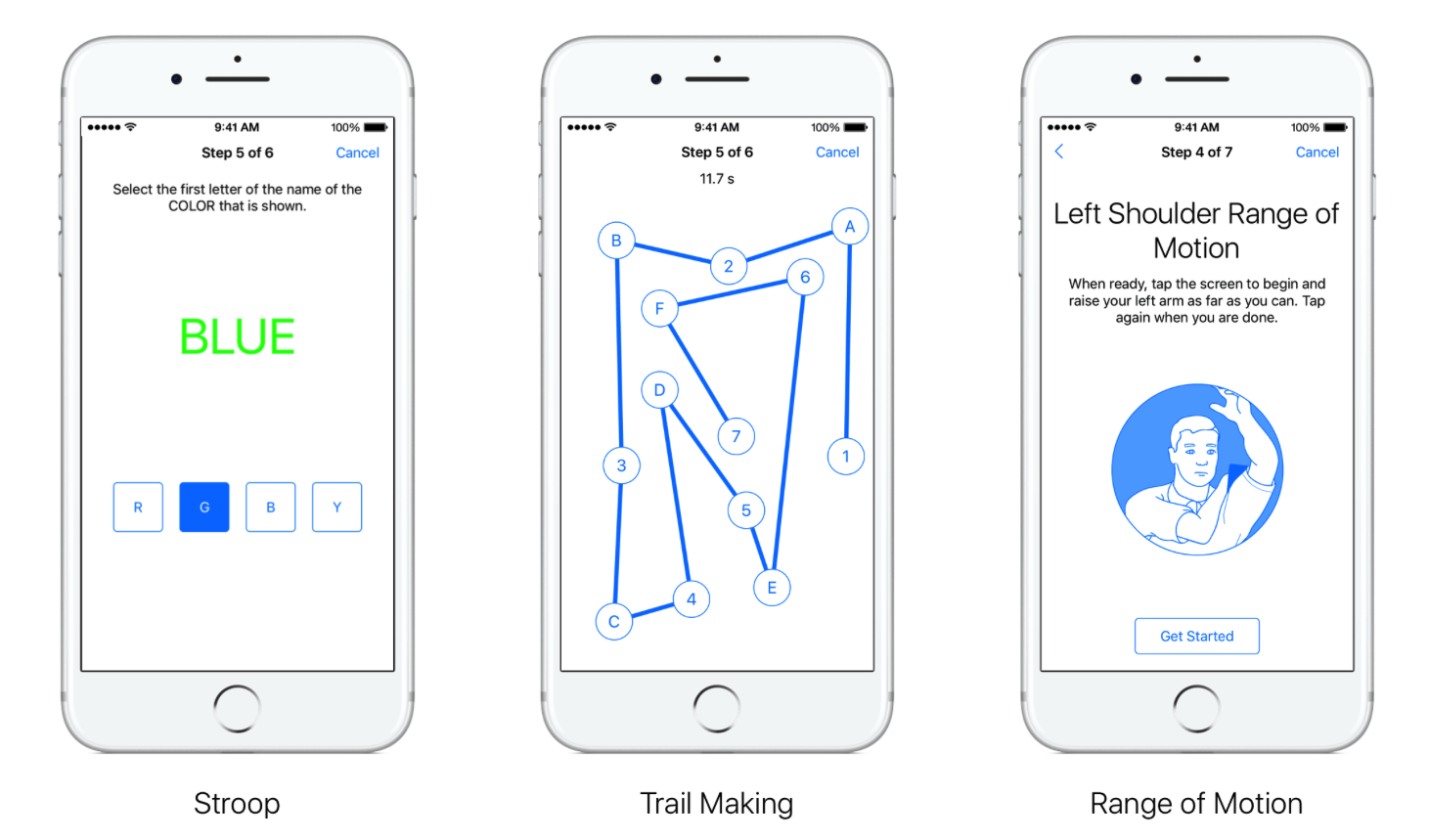Apple has updated ResearchKit, adding a number of useful functions aimed at improving medical researchers’ ability to use iPhones around the world as mobile health gathering devices.
ResearchKit 1.5 includes three new “active tasks” researchers can incorporate into their studies, along with the added ability to display rich video content to users within apps.
The new active tasks include the following:
Stroop: A test for measuring selective attention by asking participants to focus their attention on one stimulus and ignore another. The test displays concordant and discordant combinations of text and tint to the user who must ignore the text and instead select the button that reflects the first letter of the tint color.
Trail Making: This active task measures visual attention and task switching by asking participants to connect a series of alternating labelled circles by tapping the circles on the screen in the correct sequence.
Range of Motion: Designed to measure both the flexed and extended positions of users’ shoulders and knees. When participants are ready with their device in the proper position they can tap the screen to indicate they are ready to proceed. As they complete the test, data from the accelerometer and gyroscope is recorded.
Finally, Apple has updated ResearchKit’s Tone Audiometry active task to include both a left and right button. This means that participants can not only indicate when they hear a tone sound, but also have the option of specifying which ear they hear it in.
“We can’t wait to see you take advantage of these new features and we look forward to seeing them come to life within your apps,” Apple notes.
Two years on from ResearchKit’s launch
Apple first launched ResearchKit two years ago, with the aim of using its massive network of connected devices to let medical researchers carry out studies on a previously unimaginable scale.
So far, opinions in the research community have been mixed. The data collection aspect of ResearchKit has been praised, but people who assumed Apple’s “halo effect” would massively improve participants’ adherence to studies have been disappointed.
“Even with Apple’s powerful PR machine, most studies involving ResearchKit languish with few users and high attrition rates, as so many general consumer apps do,” one executive (who, granted, owns another research firm, told Healthcare IT News recently. “The asthma study published in Nature had a 2 percent completion rate, making it impossible to create any generalizable findings.”
As with expectations about Apple Pay, it seems that what it has delivered has been good — but falling short of expectations in some quarters, based on Apple’s reputation.
Have you participated, or otherwise been involved with, any ResearchKit studies? Leave your comments below.
Source: Apple


